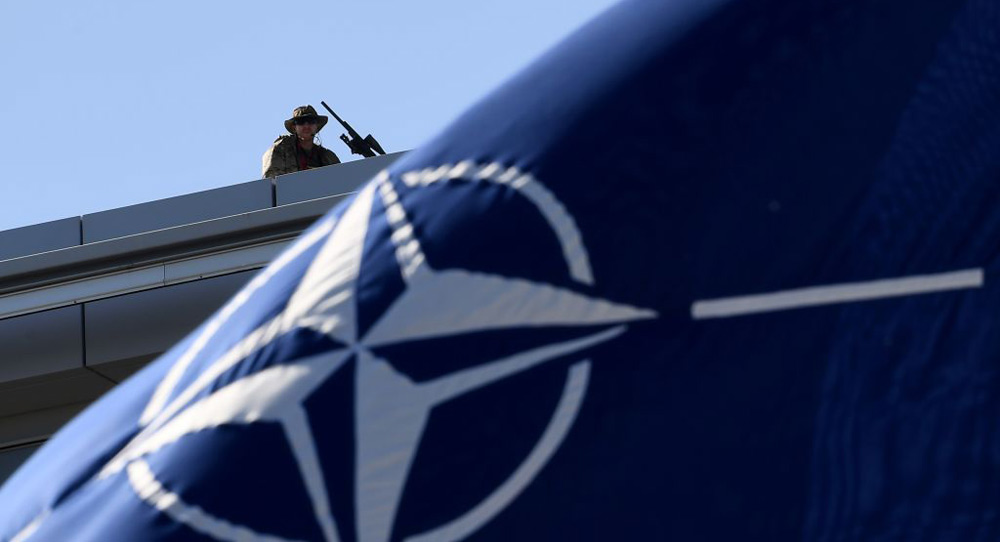In the years since the Cold War, it is hard to recall a time when there was as much hand-wringing and dire prognosticating about NATO’s impending demise as has followed the swearing in of U.S. President Donald Trump. There is hardly a story on NATO that does not proclaim that Americans and Europeans are about to go their separate ways, and barely a speech by a U.S. or European official that does not trigger editorials opining that the alliance is on its last legs, that the allies no longer see eye to eye, and that the United States is about to pack up and leave Europe.
The most recent case in point: President Trump’s address on May 25 at the newly opened NATO headquarters in Brussels, where his renewed call for Europe to spend money on defense was described as hectoring the allies, with some commentators suggesting that the president all but disavowed the Article 5 collective-defense provisions of NATO’s Washington Treaty.
Likewise, the carefully crafted statement by German Chancellor Angela Merkel after the May 26–27 G7 meeting that Europe may need to be more self-reliant was taken by the media as another indication that the transatlantic link is being wrecked by the United States because the president demurred from endorsing the Paris climate change agreement. Other examples abound.
The reality is quite different and points to a considerably more positive scenario, in which the alliance has the best chance since 1990 for a renaissance of its capabilities and strategic relevance. Developments in the alliance when it comes to capabilities, planning, and operations not only belie the current doom and gloom pervading reports on U.S.-European relations but also offer grounds for optimism of the kind not seen in years. If anything, as the premier defense alliance of Western democracies, NATO promises to be more relevant today than at any point in the past two decades.
By laying out clear expectations and going back to basics, the Trump administration has offered a genuine opportunity for NATO to shake off its post–Cold War patina and craft a new modus vivendi across the Atlantic, in which the allies speak not of burden sharing but of shared commitments. Amid the deteriorating security environment in Europe and globally, including the escalation of jihadist terrorism, there is a growing awareness on both sides of the Atlantic that the alliance offers capabilities no other organization can match. An alliance that meets the clearly defined strategic security needs of its members is not a burden but rather a vehicle for aligning shared threat assessments and resources to address them.
Europe and the United States need each other more than at any time since the fall of the Berlin Wall. The actions taken by the alliance have made this clear—be they NATO’s enhanced forward presence along its Eastern flank, its recently increased level of counterterrorism cooperation, or its focus on a new maritime strategy for the alliance. Such initiatives speak volumes about the extent to which NATO can respond to the changing geostrategic realities confronting its members.
Proposed defense budget increases in the United States augur well for a fresh round of equipment modernization and will begin correcting the imbalances in U.S. readiness worldwide, including in Europe. Likewise, NATO’s overall defense spending is increasing, if still not quite at the pace the alliance needs. Spending inched up to 2.43 percent of GDP in 2016 for the alliance as a whole, and today there are indications that a growing number of European allies are genuinely committed to meet their pledge of spending at least 2 percent of GDP on defense, although some still speak of stretching the fulfillment of their commitments over time.
The alliance has moved to enhance deterrence against Russia, deploying a U.S. brigade combat team to Poland and multinational battalions to the Baltic states. The deployments in the Baltics are especially significant, because they show that—notwithstanding perennial criticism of NATO’s sclerotic decisionmaking processes—the alliance can reach consensus on deploying forces within 100 miles of Saint Petersburg.
NATO is also planning new exercises and real investment in infrastructure beyond the questionable new headquarters in Brussels. In March, NATO’s Communication and Information Agency signed a contract with General Dynamics to modernize its IT infrastructure, the largest modernization effort in years aimed at improving the resilience of the agency’s networks.
All too often, the response in European capitals to U.S. calls for greater contributions to NATO has been a dismissive “Here they go again,” reflecting the conviction that the Yanks will always come around and continue to shoulder the lion’s share of the cost. One doesn’t hear this anymore in Europe. There is a new sense of urgency among the allies generated by terrorist attacks on their territories and pressure from a resurgent Russia.
To an extent not seen since the end of the Cold War, there is a realization in Europe that the continent genuinely needs the United States. The mix of urgent transnational and territorial threats has forced Europe to confront the reality that it cannot address its security needs adequately on its own.
Andrew A. Michta is the dean of the College of International and Security Studies at the George C. Marshall European Center for Security Studies. Views expressed here are his own.





.jpg)
.jpg)

